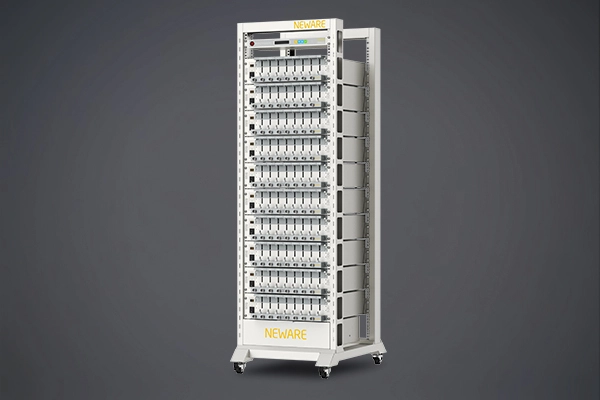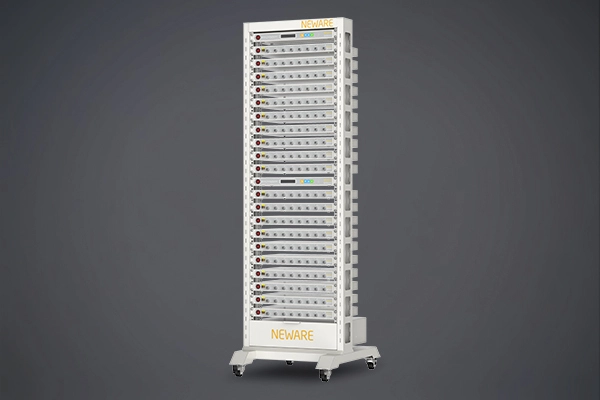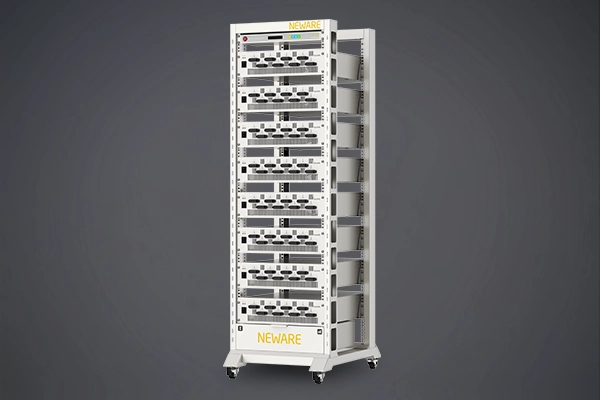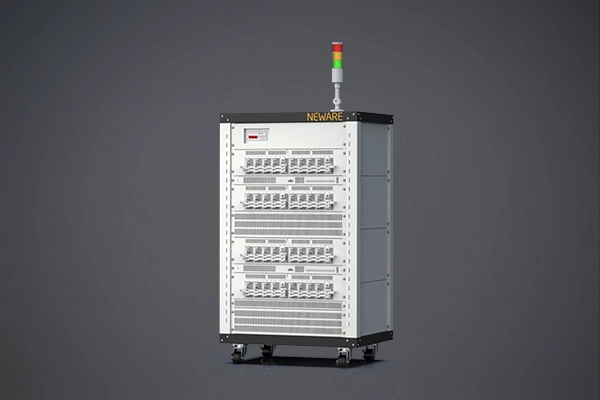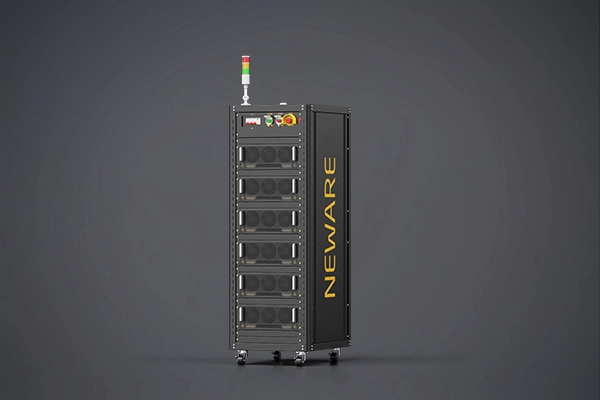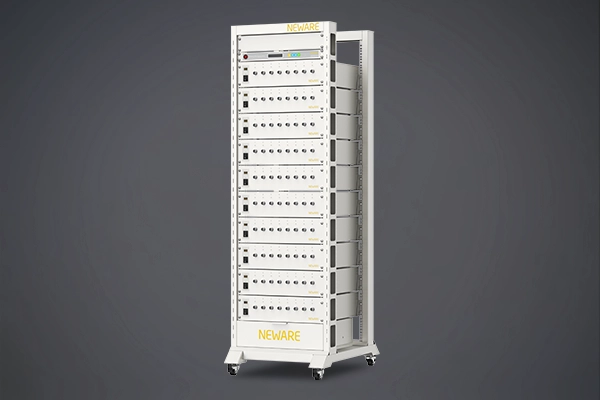Power battery, as an important part of modern energy technology, its development and application profoundly affect various industries, especially in the field of transportation. Power battery is the core component of electric vehicles, which generally consists of multiple battery monomers, and manages and controls the charging and discharging process through the battery management system (BMS) to ensure the safety, stability, and life of the battery pack, which plays a key role in promoting the green energy revolution, lowering carbon emissions, and enhancing the efficiency of energy utilization.
With the global emphasis on environmental protection and sustainable energy development, governments and enterprises have increased investment and research on power battery technology. The development of this field is not only related to scientific and technological progress, but also closely related to economic development and environmental protection. In this paper, we will discuss in detail the current status of power battery research, technical means, mainstream products and future development direction, aiming to provide valuable reference and reference for battery researchers.
The research of power battery involves many disciplines, including chemistry, electrochemistry, materials science and engineering technology. Researchers use a variety of means to continuously improve the performance and safety of batteries to meet the growing market demand. This paper will systematically introduce these research tools and their applications in the field of power battery to help readers better understand the technical background and development trend of power battery.
In recent years, the research and development of power battery has shown a rapid growth trend. Globally, many countries and regions are actively promoting the innovation and application of power battery technology. Countries and regions such as the United States, China, Japan and Europe have invested and researched the most in the field of power battery, mainly focusing on the following aspects:
High energy density: In order to improve the range of electric vehicles, researchers are constantly exploring new materials and technologies to enhance the energy density of batteries. For example, the application of high nickel ternary materials (NCM, NCA) and silicon-based anode materials has greatly increased the energy density of lithium-ion batteries.
Long life: The service life of a battery directly affects its economy and user experience. By optimizing battery chemistry and structural design, researchers are working to extend the cycle life of batteries. Now, using life prediction models and high-throughput experimental techniques, scientists are able to assess and improve battery life more effectively.
Safety: The safety of batteries has always been one of the main focuses of research. Especially in the field of electric vehicles, the thermal runaway problem of batteries has attracted widespread attention. Researchers have improved the safety performance of batteries by developing new electrolytes, diaphragm materials and solid-state electrolytes.
Worldwide research cooperation and competition have driven the rapid advancement of power battery technology. For example, the battery research programs funded by the U.S. Department of Energy (DOE), the Horizon 2020 program in Europe, and China's National Science and Technology Major Special Programs have provided substantial financial and resource support for power battery research. These programs have not only promoted basic research, but also accelerated the industrialization of new technologies.
In the field of power battery research, many famous research institutions and enterprises have made important contributions. They have achieved remarkable results in the development of new materials, battery design, and improvement of manufacturing process:
Argonne National Laboratory (ANL): Argonne National Laboratory (ANL) has deep accumulation in battery materials research, especially in the field of high-energy density materials and solid-state batteries, and its research results are widely noticed.ANL researchers have developed a variety of new positive and negative electrode materials, and conducted in-depth research on battery life and safety. Through advanced material characterization techniques and electrochemical testing methods, scientists at the lab have revealed the failure mechanisms of battery materials, providing a theoretical basis for improving battery performance.
Tesla: Tesla leads the industry in battery technology innovation in the field of electric vehicles and energy storage systems. Its self-developed 4680 battery has significantly improved the energy density and production efficiency of the battery by optimizing the battery design and manufacturing process. This new battery not only improves the range of electric vehicles, but also reduces production costs. Tesla is also actively exploring technologies to recycle and reuse used batteries, and is committed to creating a closed-loop battery supply chain to reduce environmental impact.
Panasonic and LG Chem: These two companies have a leading position in battery manufacturing. Panasonic supplies batteries to Tesla and its products excel in energy density and reliability, while LG Chem has extensive experience in high-performance batteries and new material applications for electric vehicles and energy storage systems. The technical teams of Panasonic and LG Chem continue to optimize battery materials and processes to enhance battery performance and reduce costs through high-throughput screening and advanced manufacturing technologies.
Ningde Times (CATL): Ningde Times New Energy Technology Co., Ltd (CATL) is the world's leading power battery manufacturer and technology innovator. As a core supplier of electric vehicles and energy storage systems, Ningde Times' innovations and achievements in power batteries have greatly contributed to the development of the industry. Ningde Times has made remarkable achievements in the research and development of high energy density batteries. By optimizing battery materials and structural design, Ningde Times has launched a variety of high-energy density lithium-ion batteries, which have significantly increased the range of electric vehicles. The super fast-charging battery introduced can be charged to 80% in 15 minutes, greatly shortening the charging time. This technology relies on a highly conductive electrolyte and optimized battery structure design to ensure safety and stability under high rate charging.

Figure 1 Power batteries
In recent years, power battery research has made many important advances, and the following are some representative research results:
Application of new materials: researchers continue to explore new electrode materials, such as graphene, silicon-based negative electrode and high nickel positive electrode materials. These materials can significantly improve the energy density and charging/discharging speed of batteries. For example, graphene, as a conductive additive, can significantly improve the conductivity and mechanical strength of the electrode, thus enhancing battery performance. In addition, silicon-based anode materials have a very high theoretical specific capacity, but their large volume change and poor cycling stability still need to be further solved. Through nanostructure design and composite material technology, researchers have made significant progress in improving the cycle life of silicon-based anodes.
High energy density batteries: In order to further improve the energy density of batteries, scientists have used a variety of means to optimize the design of battery structures. For example, by developing ultra-high-voltage anode materials and high-capacity anode materials, researchers have successfully manufactured lithium-ion batteries with an energy density of more than 300 Wh/kg. These high energy density batteries have important application prospects in electric vehicles and portable electronic devices. Another important development direction is lithium metal batteries, which use lithium metal as the anode and have extremely high energy density. Although lithium metal batteries still face challenges in terms of cycle life and safety, researchers have made significant progress through electrolyte optimization and protective coating technologies.
Safety improvements: The safety of batteries is one of the key factors affecting their widespread use. Researchers have improved the thermal stability and safety of batteries by using new electrolytes and solid-state electrolyte materials. For example, solid-state batteries use solid-state electrolytes, avoiding the flammability and leakage problems of liquid electrolytes and greatly improving the safety of batteries. In addition, scientists have developed a variety of built-in battery safety mechanisms, such as thermal circuit breakers, pressure relief valves, and intelligent monitoring systems, to prevent and mitigate the risk of thermal runaway in batteries.

Figure 2 Tesla 4680 battery packs
The R&D of power battery involves a variety of technical means, from battery chemistry, manufacturing process to testing and validation methods, all aspects are crucial.
The performance and application of power battery depends on its chemical composition and structure design. The following are a few of the major power battery types:
Lithium-ion batteries: Lithium-ion batteries are currently the most widely used type of power battery with high energy density, long life and relatively low self-discharge rate. The anode materials for lithium-ion batteries mainly include lithium cobalt oxide (LCO), lithium nickel cobalt manganese oxide (NCM), and lithium nickel cobalt aluminum oxide (NCA), while the anode materials are mainly graphite or silicon-based materials. In recent years, the application of high-nickel ternary materials has improved the energy density of lithium-ion batteries, while silicon-based anode materials have significantly increased the capacity of batteries. In addition, the electrolyte of lithium-ion batteries usually consists of lithium salts and organic solvents, and researchers have improved the electrochemical stability and safety of the batteries by optimizing the electrolyte composition.
Solid-state batteries: Solid-state batteries utilize a solid-state electrolyte for greater safety and energy density. The cathode and anode materials of solid-state batteries are similar to those of lithium-ion batteries, but a solid-state electrolyte is used instead of the traditional liquid electrolyte. Solid-state electrolytes can be oxide, sulfide or polymer materials with good ionic conductivity and mechanical strength. The research and development of solid-state batteries is currently in a rapid development phase and is considered an important direction for the next generation of power batteries. A major advantage of solid-state batteries is their higher thermal stability and lower self-discharge rate, which gives it a significant advantage in terms of safety and energy density.
Hydrogen fuel cells: Hydrogen fuel cells generate electricity through a chemical reaction between hydrogen and oxygen, and are characterized by zero emissions and high energy density. The core components of a hydrogen fuel cell include a membrane electrode assembly (MEA), bipolar plates, and a hydrogen storage system. Despite the advantages of hydrogen fuel cells in terms of energy density and environmental friendliness, their high cost and infrastructure development are still the main obstacles to their wide application. To reduce the cost of hydrogen fuel cells, researchers are developing low-cost catalysts and efficient hydrogen production technologies. In addition, storage and transportation technologies for hydrogen fuel cells are being improved to increase their feasibility in practical applications.

Figure 3 Hydrogen fuel cell
The manufacturing process of power batteries involves several complex steps, each of which has a significant impact on the final performance of the battery:
Material preparation: Material preparation is the foundation of battery manufacturing, including the preparation of positive electrode material, negative electrode material, electrolyte and diaphragm. Positive electrode materials are usually prepared by high-temperature solid-phase method or co-precipitation method, while negative electrode materials are mostly prepared by mechanical ball milling method. The preparation of electrolyte requires strict control of its purity and composition to ensure the electrochemical performance of the battery. The preparation of diaphragm materials mainly includes wet and dry processes, and the wet process can produce diaphragms with higher porosity and uniformity. By optimizing the material synthesis and purification processes, researchers continue to improve the performance and consistency of battery materials.
Battery assembly: Battery assembly is the process of assembling each material component into a cell. First, the positive and negative electrode wafers and diaphragm are stacked or wound into an electrode group, then electrolyte is injected, and finally the cell is sealed through the encapsulation process. The assembly process requires strict control of environmental humidity and cleanliness to avoid the impact of impurities and moisture on battery performance. Advanced automated assembly equipment and precision control technology can improve the efficiency and quality of battery assembly and reduce production costs.
Encapsulation: Encapsulation is a key step to ensure the sealing and safety of the battery. The encapsulation material usually adopts aluminum-plastic film or metal shell, and the encapsulation process includes both hot sealing and cold sealing. The sealing and mechanical strength of the battery need to be tested during the encapsulation process to ensure the safety and reliability of the battery during use. In order to improve the efficiency and consistency of encapsulation, researchers have developed a variety of automated encapsulation equipment and online inspection techniques. High-quality encapsulation can not only improve the mechanical strength and durability of the battery, but also effectively prevent the aging and failure of the internal materials of the battery.
In order to ensure the performance and safety of power batteries, a series of rigorous tests and validation are required:
Electrochemical test: Electrochemical test is the basic means to evaluate the performance of the battery, including capacity test, multiplier test and cycle life test. The capacity test is used to determine the actual capacity and energy density of the battery; the multiplier test is used to evaluate the performance of the battery under different discharge multipliers; and the cycle life test evaluates the durability of the battery through multiple charge/discharge cycles. Through means such as electrochemical impedance spectroscopy (EIS) and open-circuit voltage (OCV) testing, researchers are able to gain a deeper understanding of the battery's internal electrochemical processes and failure mechanisms.
Safety testing: Safety testing evaluates the performance of batteries under extreme conditions, including thermal runaway testing, overcharge and overdischarge testing, and short circuit testing. The thermal runaway test evaluates the stability and safety of a battery at high temperatures by heating it; the overcharge and overdischarge test is used to detect the behavior of a battery under overcharging and overdischarging conditions; and the short-circuit test evaluates the safety performance of a battery by simulating an internal short circuit. In addition, crush, pinch and shock tests are also commonly used safety testing methods to evaluate the safety of batteries under mechanical damage conditions.
Life prediction: Life prediction is the prediction of a battery's service life and degradation characteristics through modeling and simulation. Researchers use a variety of modeling methods, such as equivalent circuit models, physical models, and data-driven models, to analyze and predict the decay mechanisms of batteries. The accuracy of the life prediction models is important for the optimization of the battery management system (BMS) and the reliable use of the battery. Through big data analysis and machine learning algorithms, researchers are able to extract valuable information from a large amount of battery usage data to further improve the accuracy and reliability of the life prediction model.
There are a variety of power battery products on the market, each with its unique performance and application scenarios.
Tesla adopts self-developed battery technology, and its latest 4680 battery has significant improvements in energy density and production efficiency. This battery is widely used in Tesla's electric vehicles, providing longer range and higher performance.

Figure 4 Tesla 4680 battery
Tesla's 4680 battery utilizes an electrodeless lug design, which reduces resistance and heat generation within the battery and improves the battery's charging and discharging efficiency. In addition, the 4680 battery utilizes dry electrode technology, which reduces solvent use and energy consumption during the battery production process, thereby lowering production costs. Tesla has realized efficient management and cost control of battery production by vertically integrating the battery supply chain.
Panasonic and LG Chem are the world's leading battery manufacturers, with products widely used in electric vehicles, energy storage systems and consumer electronics:
Panasonic: provides lithium-ion batteries with high energy density and long life. Known for their consistent performance and high reliability, Panasonic's battery products are widely used in Tesla's electric vehicles. Panasonic has improved the energy density and charge/discharge efficiency of its batteries by continuously optimizing battery materials and manufacturing processes. In addition, Panasonic is actively engaged in the field of solid-state batteries and is committed to developing next-generation high-performance batteries.
LG Chem: has extensive experience in high-performance batteries and the application of new materials. lG Chem's battery products cover a wide range of applications, from small consumer electronics to large electric vehicles, and its high-nickel ternary batteries excel in energy density and longevity. lG Chem is driving the widespread adoption and technological advancement of electric vehicle batteries through its collaboration with a number of automakers around the world.
A number of emerging companies are also making important strides in the power battery space, such as Solid Power and QuantumScape, which are focusing on solid-state battery technology and working to develop battery products with higher energy density and safety:
Solid Power: Solid Power is a company focused on developing all-solid-state battery technology. Its products have high energy density and excellent safety performance, and are considered to be an important direction for next-generation power batteries. Solid Power has successfully produced a variety of solid-state battery prototypes through advanced materials development and manufacturing processes, and has been working with a number of automakers to promote the commercialization of solid-state batteries.
QuantumScape: QuantumScape focuses on developing high-performance solid-state batteries with high energy density and long life.QuantumScape's solid-state batteries utilize a unique ceramic electrolyte material with excellent ionic conductivity and mechanical strength. The company has established a strategic partnership with Volkswagen to jointly promote the application of solid-state batteries in electric vehicles.
With the continuous progress of science and technology, the development of power battery also faces new opportunities and challenges.
Power battery technology is developing rapidly, and the following are some possible future technology trends:
Development of new materials: e.g. the application of graphene and silicon-based materials will further enhance battery performance. Graphene has excellent electrical conductivity and mechanical strength, which can significantly improve the energy density and charge/discharge rate of the battery. Silicon-based anode materials have extremely high theoretical specific capacity, but their large volume change and poor cycling stability still need to be solved. Researchers have made significant progress in improving the cycle life of silicon-based anodes through nanostructure design and composite material technology. In addition, the application of high nickel ternary materials and cobalt-free materials will also receive more attention and research in the future.
Improvements in manufacturing processes: For example, automated production and intelligent manufacturing, automated production lines and intelligent manufacturing technologies have been introduced to realize the automation of the whole process from electrode material preparation to battery assembly. Automation not only improves production efficiency and consistency, but also reduces human error and energy waste, laying the foundation for mass production.
Intelligent battery management system: Intelligent battery management system is the core of the power battery, responsible for monitoring, controlling and optimizing the working status of the battery, and safeguarding battery safety and performance.
Real-time monitoring and data analysis: BMS monitors the battery's voltage, temperature, current and other parameters in real time through multiple sensors, and determines the state and health of the battery through data analysis and algorithms. This information is critical for optimizing battery charge/discharge control, improving energy efficiency and extending battery life.
Safety protection and fault prediction: The BMS is equipped with a multi-level safety protection mechanism, which can respond to abnormal battery conditions, such as overcharging, over-discharging, and short-circuiting, in a timely manner to avoid safety accidents. At the same time, it utilizes advanced fault diagnosis and prediction technology to detect potential problems within the battery in advance and take measures to prevent the expansion of faults, safeguarding the safety of the vehicle and users. In the future, intelligent BMS will be combined with Internet of Things (IoT) and Vehicle to Vehicle (V2X) technologies to realize remote monitoring and intelligent management of batteries.
Although power battery technology is advancing, it still faces many challenges. The following are some of the major challenges and their possible solutions:
Environmental protection and recycling: With the wide application of power batteries, recycling and disposal of used batteries have become an important issue. Researchers are developing efficient recycling technologies to minimize environmental impact. Various recycling processes, such as mechanical, wet and thermal methods, enable the extraction of valuable metals and materials from used batteries, reducing resource waste and environmental pollution. The development and implementation of policies and regulations are also promoting the development of the battery recycling industry. For example, both the EU and China have formulated strict regulations on battery recycling, requiring manufacturers and consumers to assume corresponding recycling responsibilities.
Cost control: Through material optimization and production process improvement, the production cost of power battery is reduced to make it more competitive in the market. The research and development and large-scale production of new materials will significantly reduce the cost of batteries. For example, the application of high nickel and low cobalt materials not only improves the energy density of the battery, but also reduces the reliance on rare metals, thus lowering the material cost. Through the introduction of advanced manufacturing technologies and automated production lines, production efficiency can be improved and labor costs reduced. In addition, optimizing supply chain management and improving resource utilization will further reduce battery production costs.
Technological innovation: Continuous innovation of power battery technology requires substantial R&D investment and interdisciplinary cooperation. Through the establishment of multi-party cooperation platforms and R&D alliances, the close integration of basic research and applied technology is promoted. For example, the U.S. Department of Energy (DOE)-funded Joint Center for Battery Studies and Research (JCESR), which gathers top research institutions and enterprises from all over the country, is committed to breaking through the bottlenecks in battery technology. International cooperation is also driving the globalization of battery technology, such as scientific research cooperation and technology exchanges between China, the U.S., Europe and Japan.
Balance between energy density and safety: Increasing the energy density of batteries usually brings challenges in terms of safety, and how to strike a balance between the two is a key issue. Researchers have optimized the design of battery materials and structures to improve the thermal stability and safety of batteries. For example, the use of multilayer electrode structures and nano-coating technology can effectively mitigate the risk of thermal runaway in batteries. In addition, the development of intelligent battery management systems (BMS) can also help improve battery safety by monitoring the status of the battery in real time, providing timely warning and dealing with potential risks.
Infrastructure development: The popularization of electric vehicles requires a perfect charging infrastructure, especially the construction of fast charging network. The government and enterprises should work together to promote the layout and construction of the charging network, and improve the coverage and service quality of charging piles. Policy support and financial subsidies are important means to promote the construction of charging infrastructure. For example, the government can encourage enterprises and individuals to invest in the construction of charging piles by means of tax reductions and subsidies. Technological innovation is also driving the development of charging facilities, such as the application of wireless charging technology, vehicle-to-vehicle charging (V2V) technology and intelligent charging management systems, which will improve charging efficiency and user experience.
Standardization and normalization: The development of the power battery industry requires uniform standards and norms to ensure product safety and interoperability. Governments and international organizations should strengthen cooperation to develop and promote battery standards to promote the healthy development of the industry. For example, the work of the International Electrotechnical Commission (IEC) and the International Organization for Standardization (ISO) in battery standardization has provided important technical guidelines for the global battery industry. The promotion of standardization not only helps to improve product quality and safety, but also promotes international trade and technology exchange.
As an important part of future science and technology, the research and development of power batteries is of great significance in realizing sustainable development. Through continuous technological innovation and process improvement, power batteries will play a greater role in electric vehicles, energy storage systems and other fields. In the future, with the continuous emergence of new materials and technologies, the performance and application of power batteries will be further improved to provide strong support for the green and sustainable development of human society.
The progress of power battery technology requires the joint efforts of global research institutions, enterprises and governments. Only through multi-party cooperation and continuous innovation can we overcome the current technical bottlenecks and realize the wide application and sustainable development of power battery. We look forward to even greater breakthroughs in power battery technology in the near future, which will bring a better future for human society.
*If the pictures in the article inadvertently violate your copyright, please contact us, we will be the first time to deal with, thank you for your understanding and support.
NEWARE TECHNOLOGY LLC
755 Ames Avenue, Milpitas, CA, USA, 95035



